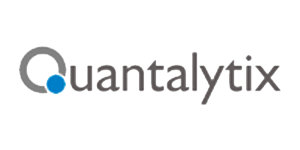
The challenge facing most community financial institutions is not a lack of data.
Institutions send millions of data points through extensive networks and applications to process, transmit and maintain daily operations. But simply having an abundance of data available does not automatically correlate actionable, valuable insights. Often, this inundation of data is the first obstacle that hinders — rather than helps — bankers make smarter decisions and more optimal choices, leading to analysis paralysis.
What is analysis paralysis? Analysis paralysis is the inability of a firm to effectively monetize data or information in a meaningful way that results in action.
The true value is not in having an abundance of data, but the ability to easily turn this cache into actionable insights that drive an institution’s ability to serve its community, streamline operations and ultimately compete with larger institutions and non-bank competitors.
The first step in combatting analysis paralysis is maintaining a single source of truth under a centralized data strategy. Far too often, different departments within the same bank produce conflicting reports with conflicting results — despite relying on the “same” input and data sources. This is a problem for several reasons; most significantly, it limits a banker’s ability to make critical decisions. Establishing a common data repository and defining the data structure and flow with an agreed-upon lexicon is critical to positioning the bank for future success.
The second step is to increase the trust, reliability, and availability of your data. We are all familiar with the saying “Garbage in, garbage out.” This applies to data. Data that is not normalized and is not agreed-upon from an organizational perspective will create issues. If your institution is not scrubbing collected data to make sure it is complete, accurate and, most importantly, useful, it is wasting valuable company resources.
Generally, bad data is considered data that is inaccurate, incomplete, non-conforming, duplicative or the result of poor data input. But this isn’t the complete picture. For example, data that is aggregated or siloed in a way that makes it inaccessible or unusable is also bad data. Likewise, data that fails to garner any meaning or insight into business practices, or is not available in a timely manner, is bad data.
Increasing the access to and availability of data will help banks unlock its benefits. Hidden data is the same as having no data at all.
The last step is to align the bank’s data strategy with its business strategy. Data strategy corresponds with how bank executives will measure and monitor the success of the institution. Good data strategy, paired with business strategy, translates into strong decision-making. Executives that understand the right data to collect, and anticipate future expectations to access and aggregate data in a meaningful way is paramount to achieving enduring success in this “big data” era. For example, the success of an initiative that takes advantage of artificial intelligence (AI) and predictive capabilities is contingent upon aligning a bank’s data strategy with its business strategy.
When an organization has access to critical consumer information or insights into market tendencies, it is equipped to make decisions that increase revenue, market share and operational efficiencies. Meaningful data that is presented in a timely and easy-to-digest manner and aligns with the company’s strategy and measurables allows executives to react quickly to changes affecting the organization — rather than waiting until the end of the quarter or the next strategic planning meeting before taking action.
At the end of the day, every institution’s data can tell a very unique story. Do you know what story your data tells about the bank? What does the data say about the future? Banks that are paralyzed by data lose the ability to guide their story, becoming much more reactive than proactive. Ultimately, they may miss out on opportunities that propel the bank forward and position it for future success. Eliminating the paralysis from the analysis ensures data is driving the strategy, and enables banks to guide their story in positive direction.

